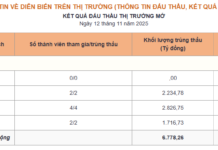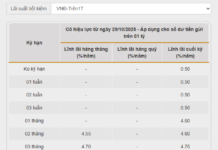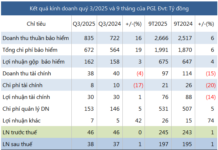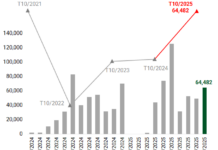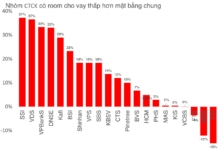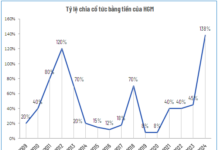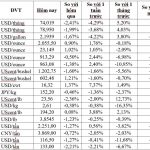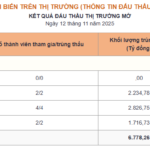Inflation reports from the world’s largest economy will shape expectations for US Federal Reserve (Fed) interest rates, which will, in turn, influence the direction of gold prices.
As of Monday morning (July 8), gold prices experienced a slight dip. At over 8 am Vietnamese time, the gold price in the Asian market decreased by $4/oz compared to the closing price on Friday in New York, equivalent to a 0.17% decrease, settling at $2,385.6/oz. Converted according to Vietcombank’s selling rate, this price is equivalent to nearly VND 73.2 million/lượng, a decrease of VND 100,000/lượng compared to the end of last week.
This week will be a busy one for the financial market as crucial US economic data is set to be released. On Tuesday and Wednesday, Fed Chairman Jerome Powell will testify before the US Congress on monetary policy. Subsequently, on Thursday, the US Department of Labor will announce the Consumer Price Index (CPI) report for June, followed by the Producer Price Index (PPI) on Friday.
Numerous experts predict that after a 2% increase last week, gold prices will break through the key threshold of $2,400/oz this week, following a prolonged consolidation phase within the $2,300-2,350/oz range.
Chief Economist Jonathan Petersen of Capital Economics anticipates a continued decline in the US dollar’s value due to waning inflationary pressures in the American economy. Data released last week revealed an uptick in the US unemployment rate, and the Dollar Index dipped by over 0.9% during the week. Mr. Petersen believes that such an environment will continue to bolster gold prices.
“The inflation data to be released by the US could reassure investors that there won’t be any further Fed rate hikes, thereby eliminating a crucial factor supporting the dollar. Instead, the greenback will face increased depreciation pressure as the weak economy pushes down US Treasury bond yields,” Mr. Petersen wrote in a report.
Analysts from TD Securities share a similar sentiment, stating that inflation in the US will no longer hinder the Fed from cutting rates at its September meeting.
“We still believe that the Fed’s decision on the first rate cut will hinge on inflation data. However, recent signals indicating weakness in the labor market and consumer spending suggest that the Fed will need to place a greater emphasis on its job-creation mission in the coming months. Hence, we remain optimistic about a rate cut in September, and we expect core inflation to continue gradually declining towards the Fed’s 2% target,” the report stated.
Signaling a positive shift in gold price prospects, the world’s largest gold exchange-traded fund (ETF), SPDR Gold Trust, resumed net gold purchases last week. The fund purchased 5.7 tons of gold during the week, equivalent to a nearly 0.7% increase in holdings, pushing the total amount to 834.8 tons of gold.
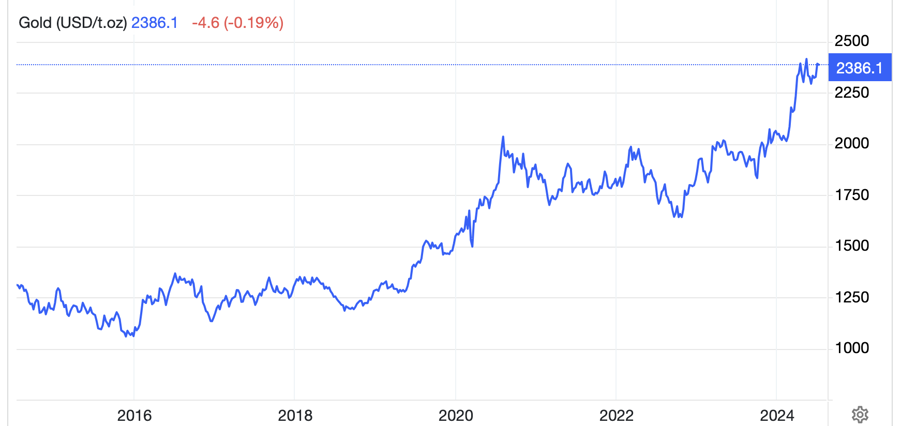
In Kitco News’ weekly gold price forecast survey, 10 out of 12 analysts predicted an increase in gold prices.
“I expect gold prices to rise this week as US Treasury bond yields and the US dollar exchange rate continue to decline. Gold prices are finding support at the $2,350/oz level. If they can surpass the resistance level of the June high at $2,388/oz, gold will have the momentum to breach the $2,400/oz mark,” said Marc Chandler, Managing Director of Bannockburn Global Forex, in an interview with Kitco News.
Contrarily, Mark Leibovit, publisher of VR Metals/Resource Letter, forecasts a potential decline in gold prices this week. “In the next few weeks or months, gold prices could plummet to the $2,000/oz level,” Mr. Leibovit stated.
Data released by the People’s Bank of China (PBOC) at the end of last week revealed that the country did not purchase any additional gold reserves in June. Previously, news of China pausing its gold reserve purchases in May, after 18 consecutive months of net buying, triggered a sharp decline in world gold prices during June.
As of the end of June, China’s gold reserves remained unchanged at 72.8 million ounces from the previous month. Due to the decrease in gold prices, the value of these reserves fell to $169.7 billion at the end of June, compared to $170.96 billion a month earlier.
China’s total foreign exchange reserves decreased by nearly $9.7 billion in June, amounting to over $3,220 billion.
Market Update on February 2nd: Oil, Copper, Iron & Steel, Rubber, and Sugar Prices Decline, Gold Surges to Almost 1-Month High.
At the end of the trading session on February 1st, the prices of oil, copper, iron and steel, rubber, and sugar all dropped, while natural gas hit a nine-month low and gold reached its highest point in nearly a month.
Market Update on February 3rd: Crude oil, gold, copper, iron and steel, and rubber all decline together.
At the close of trading on February 2nd, the prices of oil, gold, copper, steel, rubber, and coffee all saw a simultaneous decrease, with iron ore hitting a two-week low.







